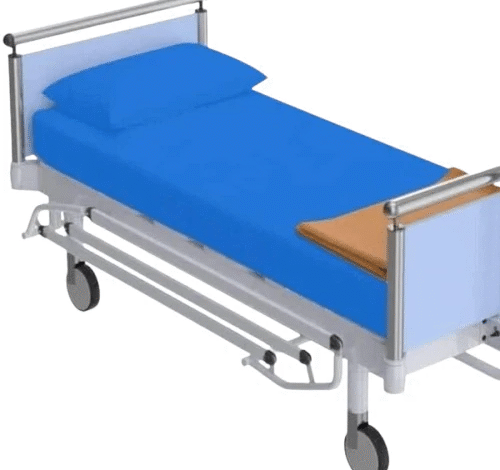Engineering Cleanliness: The Hidden Science Behind Safer Hospitals

Hospitals are traditionally seen as a healing space, but beneath their sterile exterior and well-ordered processes, there is an engineering and hygiene science world. Medical safety is not only about qualified physicians or advanced medical buildings. It is also dependent on two rather mundane but nonetheless absolutely necessary things: the inner engineering of life-saving equipment and high hygiene standards.
From the small yet vital endoscope spare parts to the humble disposable bedsheet, each plays a pivotal role in maintaining patient safety. Although not actively discussed by the community, these tools are a major part of the battle against infection, misdiagnosis, and cross-contamination in the contemporary healthcare environment.
Precision from the Inside: The Importance of Endoscope Spare Parts
Endoscopy has become the staple of minimal invasive diagnostics and interventions. The endoscope is used in gastrointestinal exploration, respiratory tests, and surgical operations to give real-time internal images with high accuracy. But what most people don’t realize is that the efficiency and reliability of this equipment depend heavily on a variety of intricate endoscope spare parts.
Endoscopes are multifaceted devices that include the light sources, camera system, control knobs, insertion tubes and bending sections. All these parts are designed to work in congested body areas. These parts erode with time, and through use and sterilization. When it does, timely and quality substitution is needed, not just to ensure functional ability, but also to avoid severe medical error occurrences.
Reliable endoscope spare parts such as suction valves, light guide connectors, biopsy channel caps, and air/water nozzles allow healthcare facilities to keep equipment in top condition without replacing the entire endoscope. The given modular design is sustainable and efficiency-enhancing.
Further, certified and compatible spare parts are required in order to ensure quality of image, flexibility of structure and patient safety. Substandard or non-OEM components may cause the device to malfunction, lesions to be missed during diagnostics, or even the complications during the procedure. When applied in critical settings in a hospital, a minor mistake concerning equipment may lead to serious consequences.
Periodic checkup and change of endoscopic parts does not only prolong the shelf life of the equipment but also makes the equipment medically safe. Hospitals typically work with specialized suppliers that offer a range of endoscope spare parts tailored for different models and procedures.
The Hygiene Revolution: Why Disposable Bed Sheets Matter
Although high-tech medical equipment is the center of interest due to its technological advancement, the low-tech innovation such as the disposable bedsheet is equally important in patient safety. Beds in any hospital or clinic are usually occupied by various patients in short periods. This is what makes them a major surface of possible pathogen transmission.
Conventional bed sheets made of cloth are risky even when they are delicately washed. High-temperature washing may not remove all of the contaminants, particularly when the linen handling process lacks strict control. Then there is the problem of logistics, collecting laundry, disinfecting it, folding, and then redistributing it is time- and resource-consuming.
In contrast, disposable bedsheets offer a modern solution that aligns with stringent infection control policies. These single-use sheets are hypoallergenic, breathable, lightweight and fluid impervious, made of non-woven fabrics. They are single use, disposable, and this thoroughly negates the dangers of laundering and reuse.
During outbreaks of contagious diseases, such as MRSA, norovirus, or COVID-19, the use of disposable bedsheets increases dramatically. They cannot be overestimated in their role of preventing hospital-acquired infections (HAIs). This ease of disposing of contaminated sheets reduces the chance of cross-infection of patients and health personnel.
In addition, material science has given rise to environmentally friendly and biodegradable versions as well, eliminating the environmental impact of disposables that existed before. The modern hospital has a variety of disposable bed sheets to select with options that are intended to be used in the operating room, isolation rooms, outpatient clinical settings, and emergency rooms.
Besides being used clinically, disposable sheets are currently widely used in patient transport systems, as well as being found in ambulance services. They facilitate rapid turnovers and do not negatively affect hygiene, which is particularly important in case of mass casualty incidents or pandemic outbreaks.
The Intersection: Micro Design and Macro Hygiene
What do endoscope spare parts and disposable bedsheets have in common? Surface-wise, little. One is a micro-mechanical component; the other is a disposable fabric. However, they both share the same philosophy of healthcare, precision and prevention.
Within an endoscopy suite the two live in harmony, yet dangerously. Whereas the clinicians are keen to get the right internal images through a well-kept scope, the patients lie on newly prepared disposable beddings. One of them helps in the accuracy of diagnosis and the other one protects against contamination. Collectively, they help to create a smooth, safe, and sterile environment of procedures.
This combination of both internal device integrity and external environmental control indicates the overall patient care approach. The takeaway is that it is not only about single tools, but rather how all of the mechanical, material, and procedural elements come together, with a common purpose in mind.
Behind the Scenes: Supply Chains, Quality, and Innovation
All these tools would not land in a hospital without a well-established network of suppliers, manufacturers and quality control mechanisms. Medical device industry, particularly in the aspect of spare parts and disposables, should strictly follow regulations laid down by institutions like FDA, ISO, and CE marking institutions.
For endoscope spare parts, the supply chain involves precision manufacturing, material testing, and compatibility assessments. A part can only be released to use after undergoing tough validation. Vendors should make sure that all valves, seals, or connectors are exactly as per the original equipment to prevent any risk of failure and violation.
In the case of disposable bedsheets, quality assurance focuses on material consistency, absorbency, tensile strength, and sterility. These goods tend to be manufactured in sterile conditions, sterile-packaged, and sold in bulk to maintain availability.
Both industries are known to be heavily dependent on innovation. As an instance, new endoscope components are being developed to have intelligent diagnostics that give technicians a warning on wear and tear. In the same way, disposable linen products are already being manufactured using renewable materials such as bamboo fiber or sugarcane pulp to promote sustainability objectives.
Moreover, the digitization of the supply chains and its automation, inventory tracking, and predictive ordering mean that hospitals will never lack the necessary components or bedding materials. These systems can aid in avoiding any delays in the procedure and reduce downtimes, especially in departments with high-volume services, such as surgery or intensive care.
In both instances, the logistics and engineering that takes place behind the scenes are the foundation on which efficient healthcare delivery is built.
Conclusion:
The safety and efficiency of hospitals are not only dependent on the showy surgical methods and innovative therapies. They are upheld by the consistent performance of unseen tools and materials—like endoscope spare parts that ensure clear internal visuals, and disposable bedsheets that protect patients from invisible pathogens.
All these parts taken together are the meeting point of engineering and hygiene, innovation and practicality. Their contribution to contemporary medicine is immense, and they work in the background most of the time. With the help of such knowledge and investment, healthcare providers can realize safer outcomes, workflow effectiveness, and increased patient satisfaction.
In a world where the need of healthcare is constantly increasing, it is these seemingly insignificant aspects that make the hospitals run efficiently, safely and sustainably.




